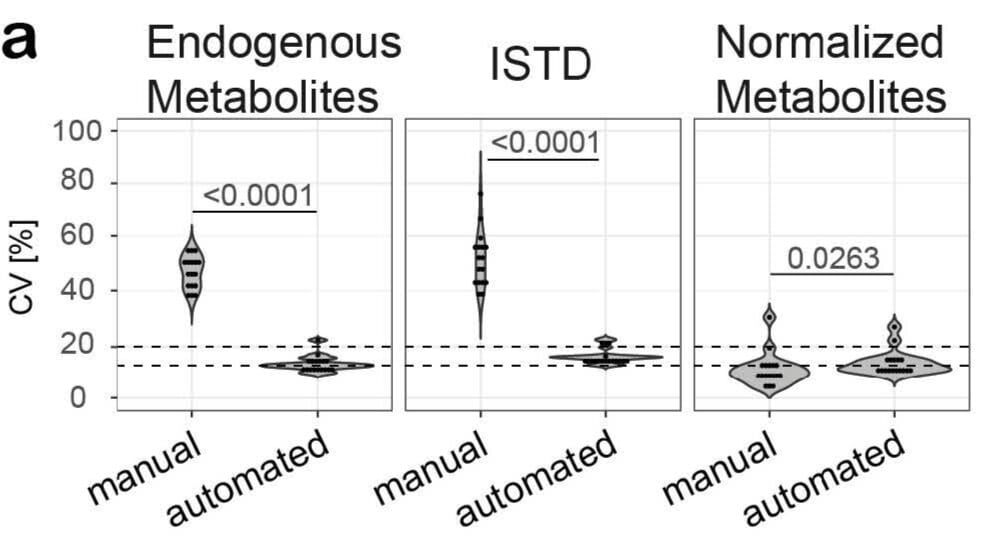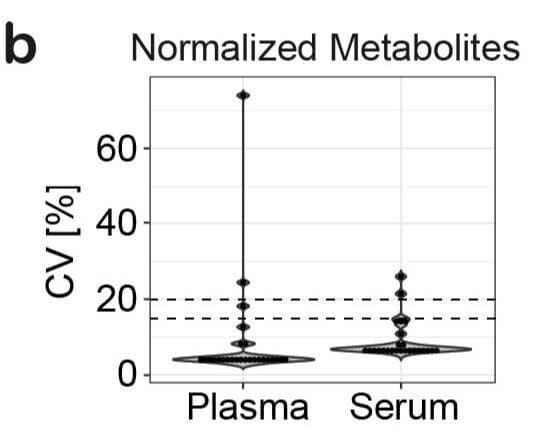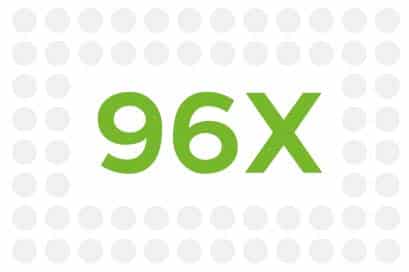
Dr. Kwiatowski
Institute of Biochemistry , University of Innsbruck
Amino acids (AAs) and their metabolites are important building blocks, energy sources, and signaling molecules associated with various pathological phenotypes. The quantification of AA and tryptophan (TRP) metabolites in human serum and plasma is therefore of great diagnostic interest. Therefore, robust, reproducible sample extraction and processing workflows as well as rapid, sensitive absolute quantification are required to identify candidate biomarkers and to improve screening methods. Researchers in the Lab for Bioanalytics & Intermediary Metabolism (Dr. Kwiatowski) at the Institute of Biochemistry (University of Innsbruck) have developed and validated a semi-automated robotic liquid extraction and processing workflow with the Andrew+ robot and Extraction+ device, followed by a rapid method for absolute quantification of 20 free, underivatized AAs and six TRP metabolites using dual-column U(H)PLC-MRM-MS. The extraction and sample preparation workflow in a 96-well plate was optimized for robust, reproducible high sample throughput allowing for transfer of samples to the U(H)PLC autosampler directly without additional cleanup steps.
The following information is directly derived from the Article “Automated Liquid Handling Extraction and Rapid Quantification of Underivatized Amino Acids and Tryptophan Metabolites from Human Serum and Plasma Using Dual-Column U(H)PLC-MRM-MS and Its Application to Prostate Cancer Study”, published on June 30th, 2024 in the journal “Metabolites”.
1
Reduced Operator Variability

2
Increased Reproducibility & Precision

3
Improved Throughput and Streamlining of Complex Workflows
The semi-automated method was designed for use in a 96-well plate format directly compatible with the autosampler of the U(H)PLC-MS system. Thanks to this automation-friendly format, samples can be transferred directly to the U(H)PLC autosampler and analyzed by mass spectrometry without further SPE, evaporation, and/or buffer exchange.
Combined with the short LC-MS analysis time of only 7.9 min, this makes for an ideal assay for the analysis of large numbers of samples in clinical and epidemiological population studies.

4
Rapid Method Creation, Optimization & Validation
“Our Master’s student set up, optimized and validated an entire Amino Acid extraction workflow from plasma and serum within 3 months using the Andrew+ and OneLab software.”
– Dr. Marcel Kwiatkowski, Lab for Bioanalytics & Intermediary Metabolism, Institute of Biochemistry at University of Innsbruck
5
Optimized use of reagents & samples
The semi-automated workflow using methanol for deproteinization, two clearance steps and conical well plates required only 20μL of human plasma or serum
Key Takeaways
Compared to manual pipetting, automated liquid handling can increase robustness, reproducibility, accuracy, traceability, optimized chemical consumption, and throughput. In recent years, miniaturized liquid handling platforms and robotic pipetting systems (like the Andrew+ Robot) have been developed that are highly modular, flexible, and easily programmable. This provides a simpler and more intuitive approach to developing laboratory workflows that enable automated, robust, reproducible, and traceable sample processing of large sample volumes.
